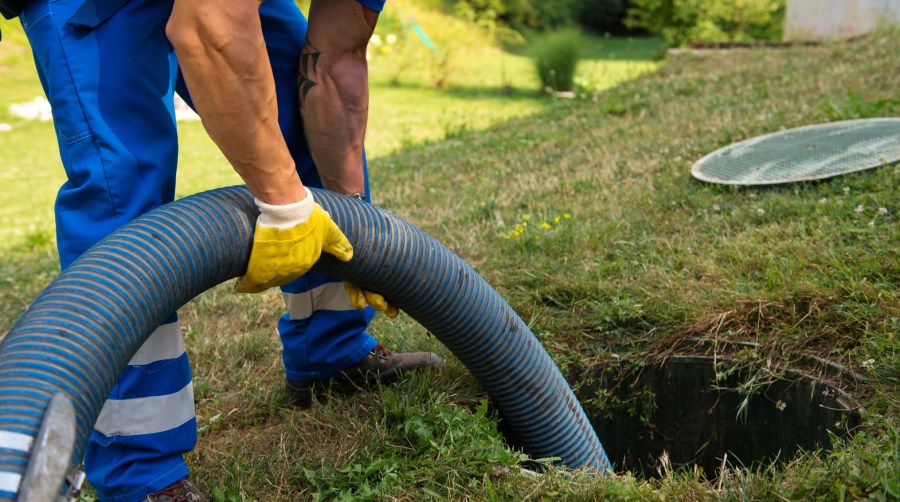Do I Need A Filter In A Planted Tank

The septic tank is a very important part of the drainage system in a home. Information technology offers a very safe way of disposing of household wastewater from kitchen, bathroom and toilets. The limerick of materials in the septic tank are scum layer, effluent and sludge which settles at the bottom of the tank.
It is a good idea to have your tank inspected yearly to determine the scum and sludge levels, to check the system's pipes, and to ensure that effluents are percolating properly at the drain field.
When Should You Pump Your Septic Tank?
A septic tank should be pumped occasionally to become rid of its constituents and avert stress build up in the unabridged septic organization that can lead to its failure.
1 way of knowing when to pump your tank is through the scum and sludge layers. It is advisable to pump the tank when the scum layer and sludge make up 25-33% of the h2o depth in the tank, or when scum layer is within 6 inches of the outlet pipe, and sludge layer is within 12 inches the outlet layer. Other signs yous should look out for are: Dull draining in tubs, showers, and washing machines, toilets existence slow when flushing, stench in drains, toilets, the surface area effectually the septic tank or your drain field or pools of water around the septic area.
Before Pumping Your Septic Tank
The start agenda on the list is hiring a truck pump (if you have none) and a skilled operator to aid you with the pumping procedure. It is important to exist nowadays on site during the pumping to make sure all the waste matter is pumped, and identify any faults the tank may have. Earlier pumping commencement stirring the septic tank by using a muck rake which aids in breaking the scum layer and also the settled bottom sludge layer. Also think to remove scum near the inlet line to avert clogging.
Pumping Your Septic Tank
Connect the vacuum piping to the pump truck and dip it slightly into the tank's large central manhole and non into the baffle inspection ports. Pumping done through the baffle port can cause impairment to the leach field.
In a slow and continuous motion stir the top of the tank using the pipe, and the bottom of the tank using a muck rake. This will ensure that all the scum, effluents and sludge are mixed and 'sucked up' into the pump truck.
Go along with the pumping until you reach the bottom of the tank. Retrieve the goal is to remove all waste materials from the tank completely.
After Pumping Your Septic Tank
After pumping is finished, carefully examine the septic tank by listening carefully for whatever effluents spilling back into the tank. If observed, it is an indication that the drain field is saturated and should be replaced. Remove sludge remnants in the tank through backflushing.
Make clean the vacuum hose and muck rake when the operation is over and organize a pumping schedule with the operator. The waste product is then transported for proper disposal or delivered to independent companies specializing in the handling of the waste material.
Prolonging Pumping Periods
Some products in the market are designed to lengthen periods between pumping. They comprise chemicals to hasten the process of breaking downwardly the sludge in your tank. Still, these chemicals can cause an imbalance in the natural ecosystem that exists in your septic tank, thus inhibiting the natural enzymes' ability to properly interruption downwardly the waste. The Environmental Protection Bureau (EPA) recommends to apply these chemicals sparingly and not substitute them for regular septic tank inspections and pumping.
Do I Need A Filter In A Planted Tank,
Source: https://www.bloglines.com/article/the-septic-tank-a-guide-on-when-and-how-to-pump-it?utm_content=params%3Ao%3D740010%26ad%3DdirN%26qo%3DserpIndex
Posted by: sheildsforlanstry.blogspot.com




0 Response to "Do I Need A Filter In A Planted Tank"
Post a Comment